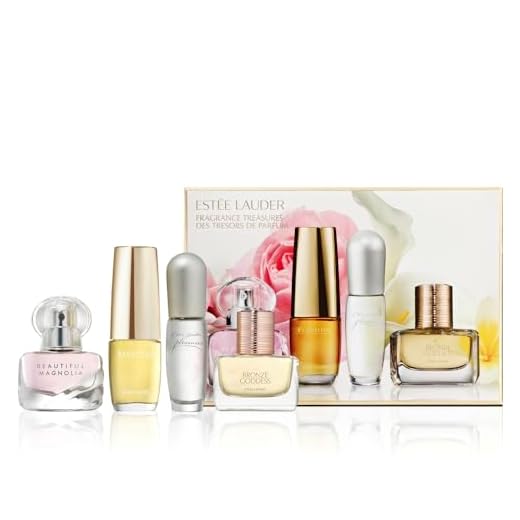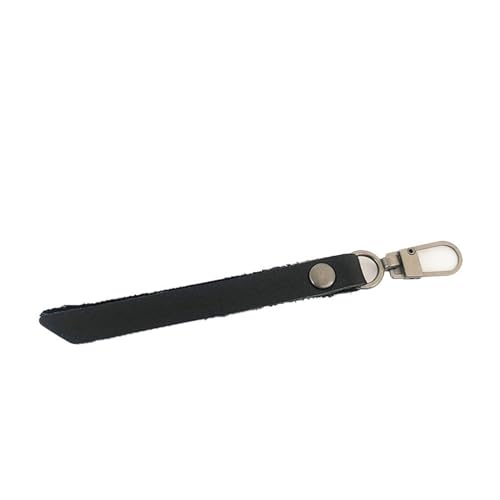
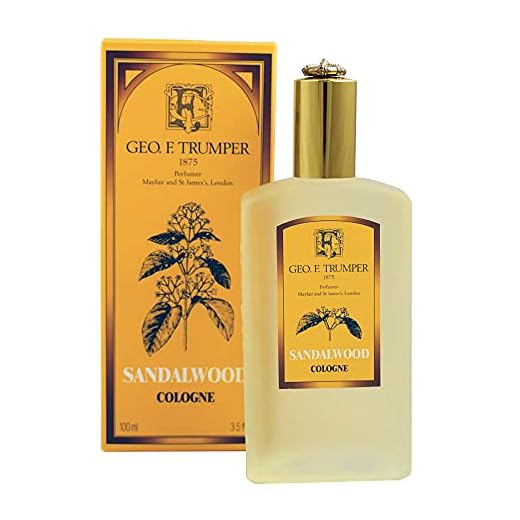
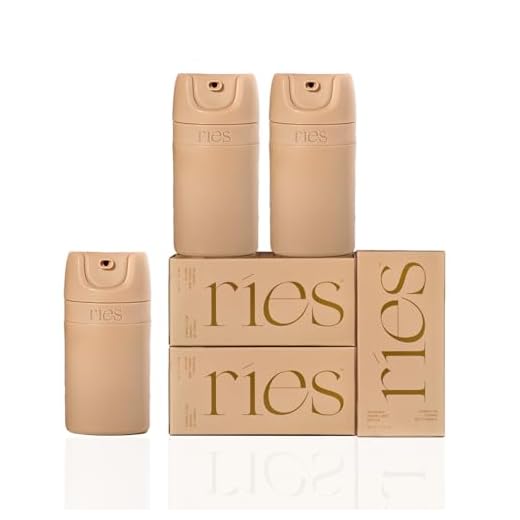
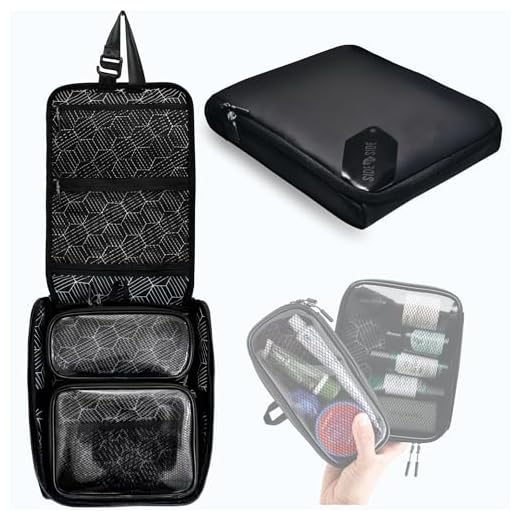


Recommendation: Limit each fragrance or splash container to 100 ml (3.4 fl oz) or less, place all such containers inside a single transparent resealable plastic bag with a maximum capacity of 1 litre (about 1 quart), and keep that bag accessible for security screening; bottles larger than 100 ml should go into checked baggage or be purchased duty‑free in sealed tamper‑evident packaging.
TSA (United States) follows the “3‑1‑1” rule: containers ≤ 3.4 fl oz (100 ml), one quart‑size clear bag per passenger, items removed or presented at the checkpoint as requested. EU/UK security limits mirror this: containers ≤ 100 ml in a single 1‑litre transparent resealable bag. Airlines and some countries apply identical screening methods for international departures.
Exemptions: medically necessary liquids, infant formula and medicines are allowed in quantities above 100 ml but must be declared and possibly screened separately; keep prescriptions and original packaging where applicable. Purchases made after security at duty‑free shops are permitted in volumes over 100 ml provided the item remains sealed in a tamper‑evident bag with the receipt; note that transfers requiring re‑screening may invalidate that protection and lead to confiscation.
Packing recommendations: use refillable travel atomizers or bottles clearly labeled ≤ 100 ml, use caps with seals or tape, place the clear resealable bag near the top of your cabin bag for quick removal, and double‑bag or wrap glass bottles when stowed in checked baggage. Replace sprays with solid or balm alternatives for ease of screening and reduced spill risk.
Hazard and carrier rules: many sprays are classed as flammable or aerosols under dangerous goods regulations; airlines may limit or prohibit them in checked or stored bags–verify the carrier’s rules and the IATA dangerous‑goods guidance before departure. Quick checklist: verify container volumes, use a single 1‑litre clear bag, keep duty‑free receipts and sealed packaging, declare medical liquids, and move full-size bottles to checked baggage when in doubt.
Transporting cologne in cabin baggage: precise rules
Limit any cologne or post-shave splash to containers of 100 ml (3.4 fl oz) or smaller and place them inside a single transparent, resealable, quart-sized plastic bag for cabin baggage screening; one bag per passenger.
Quick checklist
- Container size: 100 ml / 3.4 fl oz maximum for items going through security screening.
- Packaging: use a clear, resealable bag (approx. 1 quart / 0.95 L); remove the bag from your cabin bag at security if requested.
- Decanting: transfer larger bottles into certified travel bottles labeled with their volume to meet limits.
- Duty-free purchases: keep the product in a sealed tamper-evident bag with receipt displayed; keep the seal intact until final destination if connecting flights require it.
- Leak protection: double-bag liquids, wrap bottles in clothing or place inside a small rigid case to avoid spills.
Checked baggage and aerosols
- Checked option: full-size bottles may be placed in checked baggage, but verify your airline’s rules for flammable or aerosol products before packing.
- Aerosol sprays: treated as restricted goods–small personal-care aerosols usually must follow the same 100 ml cabin rule; larger can go in checked stowage if the airline permits.
- Alcohol content: most fragrances contain 30–60% ABV; extremely high-proof liquids could face extra restrictions–contact the carrier or national aviation authority for limits on high-ABV products.
If a security agent refuses an item, options are to transfer the liquid into a compliant travel bottle, place it in checked baggage if available, or surrender it at the checkpoint. For secure storage and organization while traveling, consider a durable travel pack such as best rugged backpack.
TSA, EU and UK liquid limits for splash cologne in cabin bags
Use containers no larger than 100 ml (3.4 fl oz) and place all such bottles into a single transparent resealable plastic bag with a capacity up to 1 litre (≈1 quart); one bag per passenger must be presented separately at security screening.
TSA (United States): the 3-1-1 rule applies – bottles ≤3.4 fl oz (100 ml), all items fit in a single quart-sized clear bag. Declare medically necessary liquids at the checkpoint. Duty-free liquids purchased airside are allowed when presented in the tamper-evident bag with receipt, but final acceptance is at screening discretion.
EU rules: each container must be ≤100 ml and all containers must fit into one transparent resealable bag of maximum 1 litre. Duty-free purchases sealed in a tamper-evident bag with receipt are generally permitted on the same itinerary; connecting-flight restrictions vary by airport and airline.
UK rules mirror the EU standard: 100 ml per container, one 1-litre transparent bag per traveller. Keep receipts and the tamper-evident packaging for duty-free items; security staff may refuse access to sealed items during some transfers.
If the grooming product exceeds 100 ml, transfer contents into an approved travel-size bottle clearly marked with volume, or place the original item in checked baggage. Use leakproof containers, keep caps secure, and avoid overfilling.
Practical screening tips: remove the 1-litre clear bag from your cabin bag and place it in a bin for X-ray; keep duty-free receipts and tamper-evident seals accessible; when in doubt about connections or local exceptions, purchase fragranced items after security or pack the full-size bottle in checked baggage.
How to measure, label and fit a post-shave splash into the 100 ml / 3.4 oz clear bag
Use containers that are exactly 100 ml (3.4 fl oz) or smaller; if decanting from a larger bottle, transfer into a marked travel bottle and leave 5–10% headspace to allow for pressure changes.
Measuring and decanting
Use a 10–100 ml graduated syringe or a small graduated cylinder for accuracy to ±1 ml. Pour through a narrow funnel or use a transfer pipette for thin liquids; for sprays use a spray-to-bottle adapter. Fill to the bottle’s fill line or to the printed volume, then tighten the cap and invert the bottle over a sink for 10 seconds to check for leaks.
For alcohol-heavy formulations expect density slightly below water; do not rely on weight-only measurements unless you know specific gravity. Label any decanted bottle with the exact volume (e.g., “75 ml / 2.5 fl oz”) to avoid confusion.
Labeling and fitting the bag
Apply a waterproof label showing: product name (e.g., “post-shave splash”), exact volume in ml and fl oz, decant date, and any allergy notes. Use a printed label covered with clear tape or a thermal label; alternatively write with a permanent marker on the bottle cap and bottle base.
Place bottles in a single visible layer inside a clear resealable bag sized roughly 20 x 20 cm (1 litre). Arrange tallest items standing upright with caps up; place short/wide bottles flat. Leave 1–2 cm of clearance from the zip seal to ensure a full seal, and avoid stacking items on top of each other.
Prevent leaks by: using bottles with inner sealing disks or silicone gaskets, wrapping cap threads with PTFE tape, and wrapping each bottle in a small absorbent tissue. Place the absorbent-wrapped bottles together in the bag so any seepage is contained and immediately visible through the clear plastic.
Preferred materials: PET or HDPE travel bottles with screw caps or atomizers; avoid single-wall glass unless double-wrapped and taped. If multiple small bottles are used, consolidate volumes into fewer bottles to maximize space and visibility while staying at or below 100 ml per vessel.
Post-shave spray vs splash: aerosol rules, flammability and cabin restrictions
Recommendation: choose splash bottles or decanted non‑pressurized pumps for onboard baggage; pressurized aerosol cans with flammable propellants pose higher risk of denial at security and removal from the aircraft.
How aerosols are classified and what to check
Pressurized spray cans are often marked with UN1950 or a GHS flame pictogram and phrases such as “extremely flammable” or ingredient names like butane, propane, isobutane or LPG. Those labels indicate a hazardous‑materials classification used by aviation regulators and carriers. Airport security checks focus on: 1) presence of a pressurized propellant, 2) explicit flammability warnings, 3) container integrity (dented or leaking cans are automatic no‑go). If any of these apply, expect additional screening and likely seizure.
Practical steps and airline interactions
1) Inspect the product label before packing: if it lists flammable propellants or shows the flame symbol, do not assume automatic acceptance–verify with your airline’s Dangerous Goods page. 2) Prefer splash format or transfer fragrance into a non‑pressurized travel pump or solid alternative; these avoid aerosol rules and pressurization risks. 3) Seal bottles tightly, use protective caps and store inside a spill‑proof pouch within cabin baggage. 4) If you must transport a pressurized can, contact the carrier in advance; some operators ban flammable aerosols from both the cabin and hold, while others permit limited personal care aerosols under their dangerous‑goods allowances. 5) At security, declare unusual containers if asked and be prepared for confiscation.
For an example of comparing formulation types and packing choices, see which is better whey protein or amino acid.
Leak-proof packing: sealing, padding and placement inside cabin bag
Use small rigid travel containers (≤100 ml / 3.4 oz) with an inner silicone valve or screw cap, wrap the neck and cap in food-grade cling film, place the container in a sealed zip-top bag, cushion with soft clothing and store upright in the central compartment of your cabin bag.
Sealing procedure: decant into PET or HDPE bottles designed for travel; fill to no more than 90% (leave ~10–15% headspace); press a single layer of cling film over the bottle mouth, screw the cap down firmly, then add one wrap of PTFE tape around the threads for extra protection. For spray pumps, depress the actuator once before sealing to return it to closed position; fit a snap cap and then tape the seam between cap and bottle.
Secondary containment: double-bagging minimizes mess. Insert the sealed bottle into a heavy-duty zip-top (look for welded seams or “triple-seal” style). Place that bag inside a padded toiletry case or a hard-shell dopp kit. If the original bottle is glass, add two layers of bubble wrap (minimum 6 mm per layer) or a neoprene sleeve before the zip-top.
Padding strategy: create a cushioned pocket by surrounding the bottle with rolled socks or microfibre cloths; use foam inserts for multiple bottles to prevent collision. Put absorbent material (small microfiber towel, folded sanitary pad, or a disposable absorbent sachet) inside the zip-top to capture any minor leaks.
Placement rules: keep liquids in the bag’s center, away from side seams and external compression points. Do not place under heavy items (laptop, shoes) or in external zip pockets that can be crushed. For quick inspection, use the top-access compartment but transfer the container back to the padded interior for transit.
Temperature and pressure tips: never overfill – thermal expansion at altitude increases pressure inside a sealed vessel. Do not loosen caps during flight; if a bottle warms, the sealed container should handle slight expansion if headspace is left. Store aerosols and flammable products according to airline regulations in a separate section (refer to relevant rules for cabin vs checked carriage).
Final checklist before departure: decanted into a certified travel bottle ≤100 ml, inner valve or taped threads, cling film seal under the cap, placed in a heavy-duty zip-top, padded with soft items inside a hard or padded case, stored upright in the bag centre, plus an absorbent cloth and a spare zip-top for containment if a leak occurs.
Options when a grooming product exceeds limits: checked baggage, duty‑free handover, and shipping
If the bottle is larger than 100 ml, place it in checked baggage, purchase it airside sealed by the retailer, or ship it ahead via courier.
-
Checked baggage – practical steps
- Use the original container with a secure cap; add a secondary seal (zip bag or heat‑shrink sleeve).
- Wrap bottle in absorbent material (paper towel) and cushion with clothing or bubble wrap; position upright in the centre of the suitcase.
- Line the case with an inner waterproof barrier if transporting multiple liquids.
- Declare at check‑in if transporting multiple aerosols or large volumes; many airlines restrict aerosols/flammables by weight/volume per passenger – reported common ranges: ~2–5 L total for aerosols/flammable toiletries. Confirm limits with the carrier before departure.
- Label the checked bag as fragile and insure contents if high value.
-
Duty‑free sealed purchase – how to make it work on transfers
- Buy only after passing security; the retailer will seal the item in a tamper‑evident bag with the receipt visible inside.
- Keep the tamper‑evident bag sealed until reaching the final destination; do not open during connections.
- If a transfer involves re‑screening, ask the shop for a receipt and for advice on whether the purchase will be accepted through the specific transfer point – some airports offer gate collection or transfer desk storage if resealing would be required.
- For US/UK/EU travel, many airports accept duty‑free liquids in sealed bags with receipt, but rules vary for transit through third countries; verify with the retailer and the transfer airport.
-
Shipping ahead – recommended process
- Check the alcohol percentage on the product label and call the courier’s dangerous‑goods desk. High‑ethanol liquids are often classed as flammable and may be refused by some air services.
- If permitted, pack the bottle in its original container, place it in a sealed plastic bag with absorbent material, then in a strong outer box with cushioning; use UN‑approved packaging only when the carrier requires it.
- Choose ground transport if the carrier restricts air carriage for flammable consumer liquids; request a written acceptance if the shipment involves dangerous‑goods paperwork.
- Pay for tracking and insurance; save all paperwork and the carrier’s DG acceptance reference in case of questions at origin or destination.
Immediate actions: check the airline’s dangerous‑goods/checked‑bag rules, ask the duty‑free retailer about transfer procedures before purchase, or contact a courier’s hazardous‑goods team for a shipping quote and packaging requirements.
What to tell security officers and how to handle inspections or confiscation
Declare the item immediately at the checkpoint: state “fragrance splash, 50 ml, in a clear 1 L resealable bag; here is the receipt” and place the bag in the screening tray separately for inspection.
Present the container upright with label facing the officer so volume marking is visible. If the cap is sealed, keep it sealed unless an officer requests opening; comply if they request a brief demonstration (unscrew cap only under supervision). Hand over proof of purchase when asked. Keep the rest of your small toiletries accessible to avoid delaying screening.
If officers decide to inspect, tag or remove the item
Ask for a written tag or receipt that records seizure or retention, along with the staff member’s name and badge/ID number. Photograph the item, its outer packaging and the tag before surrendering it. Request a written explanation that includes the airport/agency reference, date and location of the action; retain boarding pass and proof of purchase for any follow-up claim.
Steps after confiscation
Contact airport lost & found and the specific security agency within 7–14 days using the reference from the written tag. If the item was bought at an airside shop, speak to that retailer before departure about refunds or vouchers and keep all receipts. If no receipt was issued at the checkpoint, escalate to the duty manager on site and ask for a report number to support disputes with card issuer or travel insurer.
| Situation | Exact phrase to use | What to show | Immediate action |
|---|---|---|---|
| Standard X‑ray tray | “Fragrance splash – 50 ml, in 1 L clear bag; receipt here.” | Bottle label with ml, clear resealable bag, receipt | Place bag in tray separately; follow officer directions |
| Random manual check | “I will open the bag if you want to inspect; bottle sealed.” | Sealed cap, purchase receipt | Allow supervised opening only; do not hand item to anyone without tag |
| Item marked for disposal/seizure | “Please provide a written receipt or tag and your name/ID.” | Photograph of item and tag, boarding pass, purchase receipt | Obtain receipt/tag, photograph, get staff details, retain documents |
| Dispute required | “I request a written report and reference number to follow up.” | All prior documents and photos | Escalate to duty manager; record time and reference for further claims |


